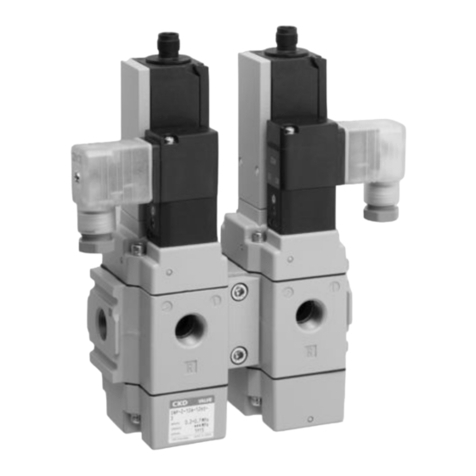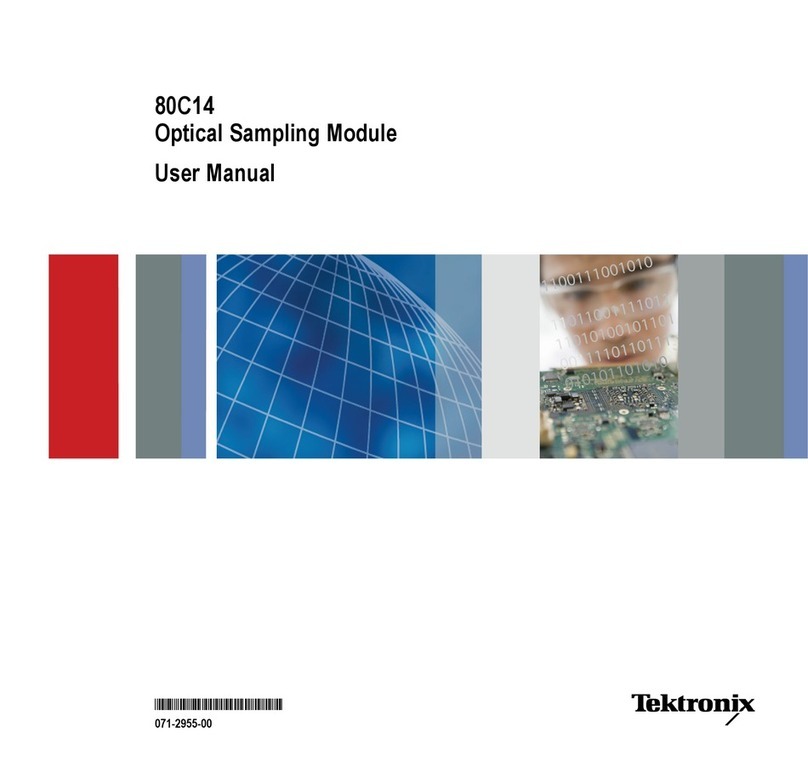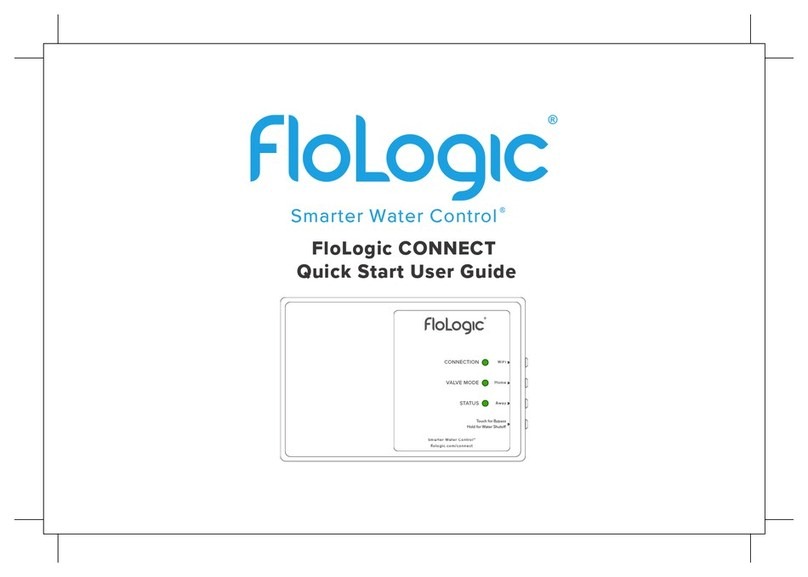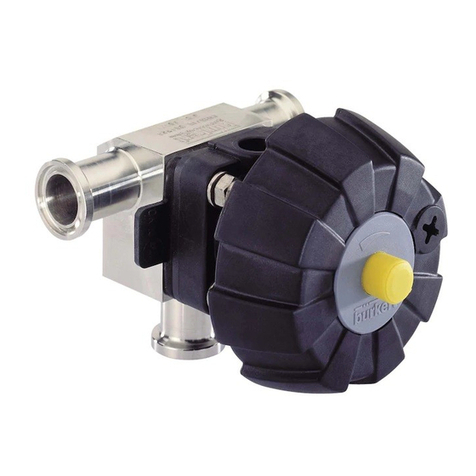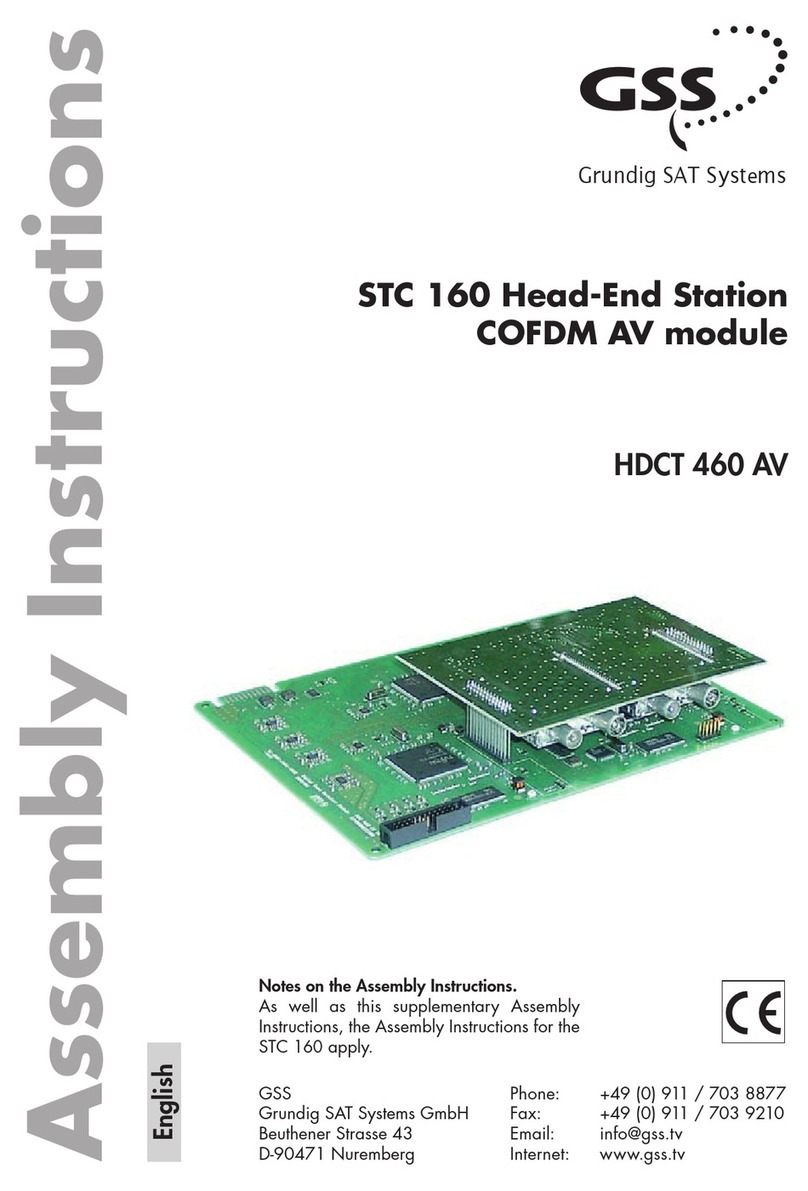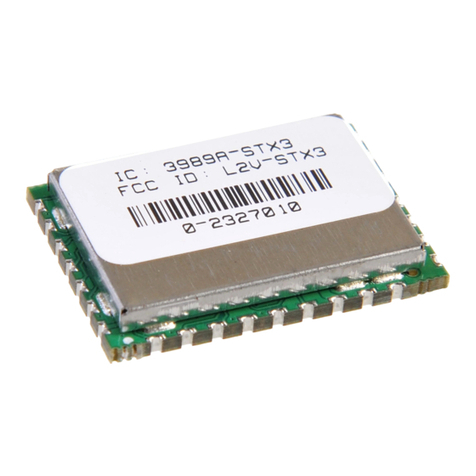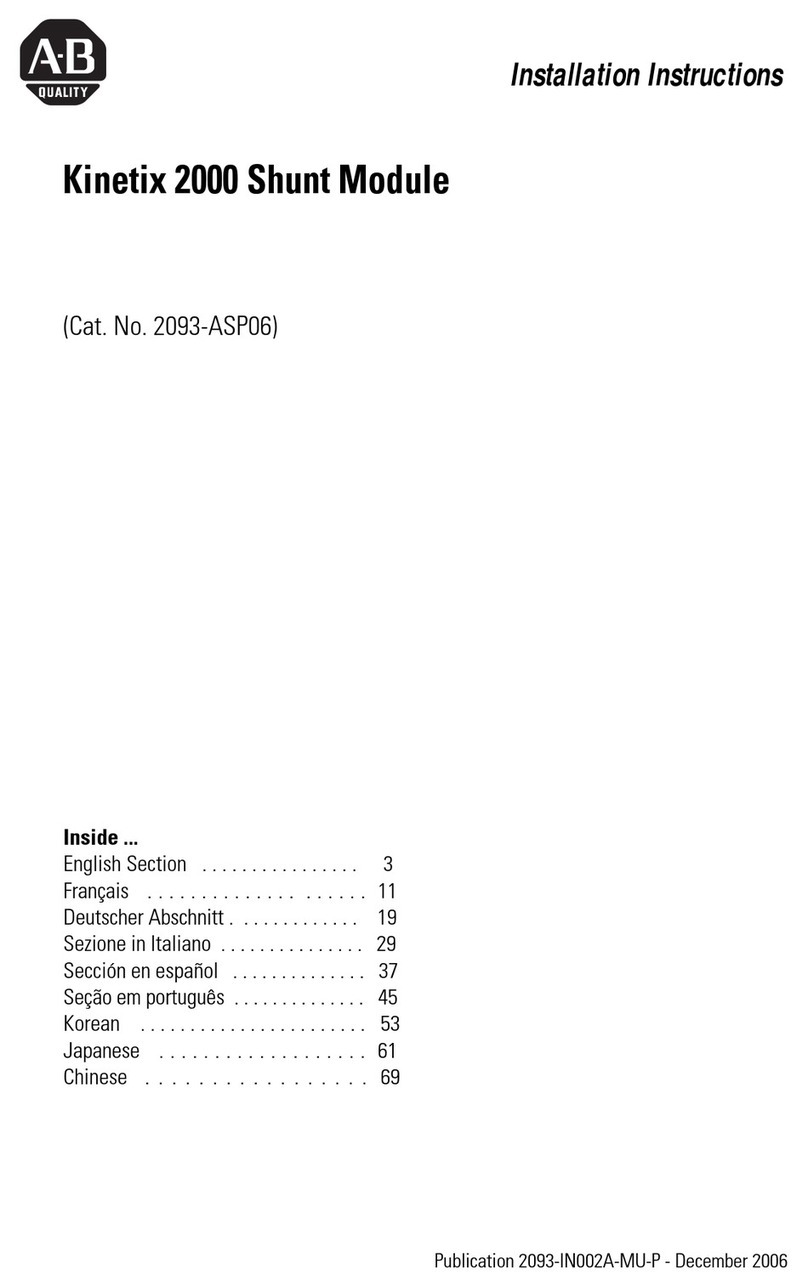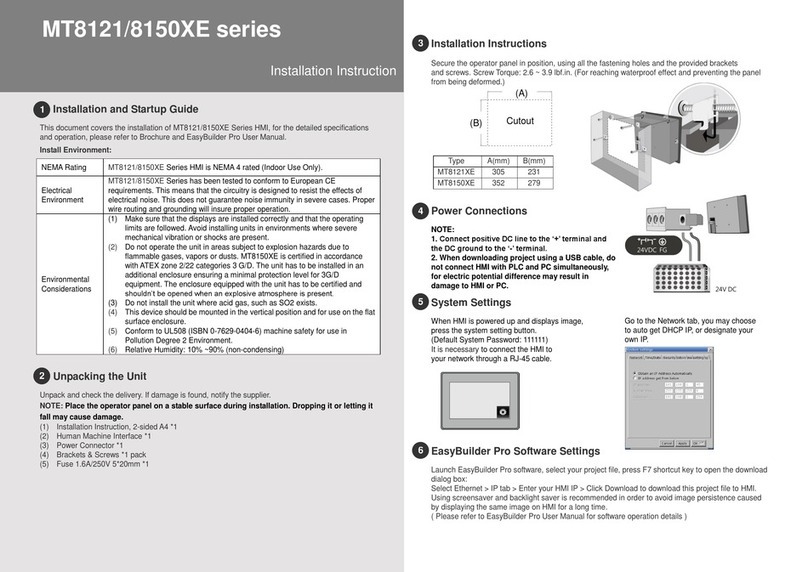Norriseal 2200 series Operating instructions

OPERATING AND MAINTENANCE MANUAL
Series 2200/2220 - 1.0" & 2.0"
Series 2220
INIRRIS
PRODUCTION SOLUTIONS
INN
---
N
N=
AEI
elle!
AU
Engineered
11
11N1
WY ink
muaErael
Performance
A
MI
*
CAMPAAV

OPERATING AND MAINTENANCE MANUAL
Series 2200/2220 - 1.0" & 2.0"
TABLE OF CONTENTS
INTRODUCTION
1
About the Series 2200/ 2220 Valve
1
Identifying the valves
1
1.0 VALVE INSTALLATION AND START-UP 2
2
2.0 VALVE MAINTENANCE
3
2.1 Actuator Disassembly
3
2.2 Actuator Re-Assembly
4
2.3 Valve Disassembly
4
2.4 Trim Inspection
5
2.5 Trim Restoration
6
2.6 Valve Re-Assembly
6
3.0 REPAIR KITS
6
4.0 TROUBLE DIAGNOSIS
7
4.1
Internal Leakage Problems
7
4.2 External Leakage Problems
8
4.3 Valve Performance Problems
9
5.0 VALVE BODY STYLES AND PORT ORIENTATION MARKINGS
11
TABLES
Table 1 — Maintenance Schedule
2
Table 2 — Lapping Compounds
5
Table 3 — Bridge Symbol and Valve Body Port Orientation
1
2200M —02012, August, 2012
Mika
P.O. Box 40525, Houston, Texas USA 77240-0525
--
--
._AINI MIME All
Tel: 713.466.3552 • Fax: 713.896.7386
IMINIIYMIRIO1111MIN www.norriseal.com
10 IMMO
0:0••••

OPERATING AND MAINTENANCE MANUAL
Series 2200/2220 - 1.0" & 2.0"
INTRODUCTION
CAUTION!
You will see warning boxes like this
throughout the manual. Please read
and strictly observe these warnings to
prevent personal injury or equipment
damage. Before you begin the instal-
lation, operation or repair of equip-
ment, make sure to completely review
and understand the instructions in this
manual.
The information contained in this man-
ual is about the 1.0" and 2.0" Norriseal
Series 2200 and 2220 Control Valves.
Please refer to separate manuals for
all other controllers, positioners and
their optional accessories.
About the Series 2200/2220 Valve
The Series 2200/ 2220 Valve is
designed for general use for either
liquid or gas source that require a
throttle or on/off control. The Series
2200/2220 Valve has one port with
three different types of plugs (or "un-
balanced trim"): quick opening, equal
percent and modified percent. The
pneumatic spring-diaphragm actua-
tor is either open yoke (model 2200)
or close-coupled (model 2220). The
valve has a hammer nut closure.
All Norriseal valves come with spring-
diaphragm pneumatic actuators that
are either reverse-acting (fail-closed)
or direct-acting (fail-open). Both are
available in No. 9 (35 sq. in.) and No.
12 (70 sq. in.).
The Series 2200/ 2220 valves have
non-adjustable, spring-loaded pack-
ing with PTFE V-rings and a spring
below the packing to maintain a tight
stem seal.
WARNING!
Before attempting to disassemble or
repair this valve, please make sure that
all pressure going through the valve
has been relieved. Failure to do this will
cause personal injury and/ or damage
to the device. In addition, the fluid that
projects from the device after failure to
comply with these warnings will cause
injury to people, equipment and the
environment.
Identifying the valves
The nameplate of each valve has the
assembly information you need to
replace the part and can be found on
its upper diaphragm. It is important
to use genuine Norriseal parts when
repairing valves. When calling your
Norriseal representative, make sure
to have the serial and model numbers
found on the nameplate.
WARNING!
When consulting the nameplate please
pay attention and adhere to the maxi-
mum pressures and temperatures for
the valve. Should you need to increase
the limitations of the parts, install relief
valves or other over-pressure protec-
tion devices in the pressure lines.
2200M — 02012. August. 2012
MIME Al
111'%1111YRIFILIOIGMb
CCOMPIIIV
P.O. Box 40525. Houston, Texas USA 77240-0525
Tel: 713.466.3552 • Fax: 713.896.7386
www.norriseal.com
Page 1 of 12

TABLE1 MAINTENANCE SCHEDULE*
ITEM
INSPECTION SCHEDULE
Valve Trim
(Seat, Plug)
Inspect every 6 months, under normal service conditions
(low-pressure drop and no sand or abrasives in fluid).
Or inspect every 2 months, under service conditions, such as
high-pressure drop, corrosion, or fluid with sand.
Stem Packing
Inspect Packing at least once a year.
Actuator
Inspect Diaphragm, Spring and Stem once a year.
Body
The body should last many years under normal conditions.
However, under severe conditions of corrosion or erosion from
sand in the flowing fluid, high-pressure drops, or high-fluid
velocity, body life may be greatly reduced. Inspect the body
each time the bonnet is removed.
Bonnet
Inspect Bonnet once a year or whenever trim inspection is
performed.
Seals
Inspect 0-rings each time valve is disassembled.
'Under certain operating conditions, this suggested maintenance schedule will not be adequate and shorter time intervals
may be required.
Series 2200/2220 - 1.0" & 2.0"
CAUTION!
Your valve configuration and construc-
tion materials were selected to meet
specific pressure, temperature, pres-
sure drop and fluid conditions. Some
combinations of body and trim are
limited in their pressure drop and tem-
perature ranges. Please call the Nor-
riseal sales office or your sales repre-
sentative before subjecting the valve to
conditions outside the specified range.
1.0 Valve Installation and
Start-Up
1.
Inspect the valve for any dam-
age or residue that might have
occurred during packing or ship-
ping. Remove all protection ma-
terial from the parts.
2.
Make sure to blow air into all
the pipelines to rid them of any
foreign material. Threaded and
gasketed surfaces should also
be free from residue.
3.
Be sure to install the valve so
that flow direction is under the
seat for throttling trim. For quick
opening trim, it can be installed
either under the seat or over the
seat. (reference Table 3)
4.
Good piping practice during in-
stallation includes using a suit-
able gasket in between the body
and pipeline flanges. For thread-
ed (NPT) bodies use pipe thread
sealant.
5.
This is a good time to inspect the
nameplate on your valve. Iden-
tify the working pressure limita-
tions of your valve (they are rated
ANSI 150, 300, 600, 900, 1500,
or 2500 class) and DO NOT ex-
ceed the marked pressure.
6.
If you choose to insulate your
valve, DO NOT insulate it above
the hammer nut.
7. Connect the supply pressure
to the actuator or the positioner
connection. (REMINDER: refer to
the nameplate for pressure limi-
tations) Run the actuator through
a couple of cycles to confirm the
proper operation of the valve.
WARNING!
Do not supply pressure that exceeds
the maximum on the nameplate. Under
no circumstances should the actuator
supply pressure exceeding 35 psig for
#12 actuators or 50 psig for #9 actuators.
8. In certain operating conditions
the actuator's springs may need
to be adjusted. To adjust the
springs:
A.
FOR A REVERSE ACTUATOR
Loosen the lock nut on the ad-
justing screw located on the top
of the actuator spring housing.
To achieve a tighter shut off, in-
crease the spring's preload and
plug seating force by turning the
adjusting screw CLOCKWISE.
To reduce the preload, turn the
adjusting screw COUNTER-
CLOCKWISE. Be sure to tighten
the lock nut after making the
needed adjustments.
NOTE: Don't adjust the spring past the
point necessary to achieve shut off and
past the maximum actuator pressure
allowable to fully open the valve.
B.
FOR A DIRECT ACTUATOR
Remove the spring cover by first
loosening the two set screws at
the base of the cover. To increase
the spring's pre-load, turn the ad-
justing nut CLOCKWISE. To re-
duce the pre-load, turn the adjust-
ing nut COUNTERCLOCKWISE.
Be sure to replace the spring
cover and tighten the set screws
after adjusting your springs.
NOTE: Only adjust the spring tension
to the extent necessary to fully open
the valve at operating conditions.
Any additional adjustments will result
in a reduction of plug seating force,
possibly resulting in trim leakage.
IMO
ISIC Ir Al
,
Page 2 of 12
111Novnlilk1W6D411
•
1,01,11
--
i)
moven
P.O. Box 40525, Houston, Texas USA 77240-0525
Tel: 713.466.3552 • Fax: 713.896.7386
www.norriseal.com
2200M — 02012. August. 2012

OPERATING AND MAINTENANCE MANUAL
Series 2200/2220 - 1.0" & 2.0"
2.0 Valve Maintenance
WARNING!
Before making any repairs to your valve
follow the following four steps:
1.
Isolate the valve from the
process/ system.
2.
Shut off all supply lines to the
actuator.
3.
Release the process pressure
(both upstream and downstream).
4.
Vent the actuator supply pressure.
Be aware that all valve parts are
subject to normal wear and tear,
and as a result, should be inspected
and replaced regularly, as neces-
sary. The frequency of your inspec-
tions will depend on the frequency
and type of usage your parts are put
through. During each inspection, you
will be required to disassemble and
re-assemble the valve. The following
section will describe this process in
detail. Should maintenance be nec-
essary, it can be done while the valve
body is in line as long as:
1)
The line is not in service
2)
The line is isolated from
active process by block valves.
Refer to the parts diagrams during
disassembly and re-assembly. There
you will find a complete list of parts and
configurations.
3.
CLOCKWISE until the spring's
preload is completely removed
(or de-energized). Remove the
adjusting nut, washer, upper
spring retainer and spring.
4.
Remove the nuts and screws
from around the diaphragm
housing flange and remove the
upper diaphragm housing by slid-
ing it carefully upward and off the
stem.
5.
Remove the cotter pin and
unscrew the upper stem from the
lower stem.
6.
Remove the bearing washers,
0-ring, diaphragm, diaphragm
plate and hex nut (2220).
7.
Unscrew the lower housing from
the yoke (2200) or bonnet (2220).
This is the final step in disassem-
bly of the 2220 valve actuator.
8.
Loosen the two jam nuts secur-
ing the valve stem to the actua-
tor stem and unscrew the stems.
Remove the travel indicator from
the valve stem (2200 only).
9.
If repair warrants, unscrew the
yoke (2200) from the bonnet.
2.1 Actuator Disassembly
A.
Direct (Fail-Open) Actuators
1_1
1.
Vent and disconnect the supply
Series 2200 Yoke-Mounted
pressure from the actuator.
Direct-Acting
2.
Remove the spring cover by first
loosening the set screws at the
base of the cover.
Turn the adjusting nut COUNTER
Series 2220 Close-Coupled
Direct-Acting
P.O. Box 40525, Houston, Texas USA 77240-0525
—.._
mii6
_01k111111er Lir Tel: 713.466.3552 • Fax: 713.896.7386
www.norriseal.corn
OM*
caw,
2200M — 02012, August, 2012
Page 3 of 12

OPERATING AND MAINTENANCE MANUAL
Series 2200/2220 - 1.0" & 2.0"
A.
Reverse (Fail-Closed)
Actuators
CID
Series 2200 Yoke-Mounted
Reverse-Acting
1.
Vent and disconnect supply pres-
sure from the actuator.
2.
Loosen the lock nut on the adjust-
ing screw on top of the actuator
spring housing. Turn the adjust-
ing screw COUNTERCLOCK-
WISE until the spring's preload
is completely removed (or de-
energized)
3.
Remove the nuts and screws
from around the diaphragm hous-
ing flange and remove the upper
diaphragm housing, spring and
upper retainer.
4.
Remove the nuts from the top of
the stem.
5.
Remove the lock washer,
spring retainer, bearing washers,
0-ring, diaphragm, diaphragm
plate (and hex nut — 2220).
6.
Unscrew the lower housing from
the yoke (2200) or bonnet (2220).
This is the final step in disassem-
bly of 2220 valve actuator.
Series 2220 Close-Coupled
Reverse-Acting
7.
Loosen the two jam nuts secur-
ing the valve stem to the actua-
tor stem and unscrew the stems
(2200 only). Remove the travel
indicator from the valve stem.
8.
If repair warrants, unscrew and
remove the yoke (2220) from the
bonnet
2.2 Actuator Re-Assembly
To re-assemble the actuator, lubri-
cate the 0-rings and simply reverse
the steps of the disassembly proce-
dure in Section 2.1 for the appropri-
ate actuator (direct or reverse).
2.3 Valve Disassembly
A.
With the Actuator Remaining
Attached to the Valve Body
Series 2200/2220 Body
CAUTION!
Use care to avoid damaging 0-ring
sealing surfaces. Assume all of these
parts are in good condition when dis-
assembling the valve and protect
them accordingly. The surface finish
of the valve stem is critical for creat-
ing a reliable packing seal. The bore
of the seat/ cage is critical for smooth
operation of the valve plug. The seat-
ing surfaces of the valve plug and
seat/ cage are critical for tight shutoff.
WARNING!
Before making any repairs to your valve
follow the following four steps:
1.
Isolate the valve from the
process/ system.
2.
Shut off all supply lines to the
actuator.
3.
Release the process pressure
(both upstream and downstream).
4.
Vent the actuator supply pressure.
Page 4 of 12
IMO
-
=
-
-011111111110EA1
Ihir
Inv IMOIGFit
a
*M
01
)....
w
P.O. Box 40525. Houston. Texas USA 77240-0525
Tel: 713-466.3552 • Fax: 713.896.7386
www.norriseal.corn
2200M — 02012. August. 2012

Tungsten
Carbide
9U Heavy
Diamond
TABLE2
LAPPING COMPOUNDS*
TRIM
LAPPING
MATERIAL
MATERIAL
300 Series SST
17-4PH SST
Stellite (Alloy 6)
Clover*
Boron-Carbide
Grade 2A
OPERATING AND MAINTENANCE MANUAL
Series 2200/2220 - 1.0" & 2.0"
1. Vent and disconnect supply
pressure from the actuator.
2.
Remove all spring
compression.
a.
For A Direct Actuator:
Loosen the two set screws,
remove the spring cover
and turn the adjusting nut
COUNTER CLOCKWISE
until all spring compres-
sion is removed from the
actuator spring.
b.
For A Reverse Actuator:
Loosen the lock nut on the
actuator adjusting screw
and turn the adjusting
screw COUNTERCLOCK-
WISE until all spring com-
pression is removed from
the actuator spring.
3.
Unscrew the hammer nut (turning
COUNTERCLOCKWISE) from the
valve body by striking the lugs
with a hammer.
4. Lift all top workings (bonnet,
actuator, stem and plug) from
the valve body and place on a
suitable work surface.
CAUTION!
When disassembling the plug, provide
adequate support to avoid bending or
damaging the stem or trim. Protect
them by using a solid block as a backup
while removing the pin from the plug.
5.
Using a punch or 1/8 drift pin,
drive the pin from the stem and
unscrew the plug from the stem.
6.
Pull the seat/ cage from the valve
body. In order to remove it, it may
be necessary to hook one of the
cage flow openings and pull it. A
seat/ cage removal tool is avail-
able from Norriseal.
B.
With the Acuator Previously
Removed from the Valve
CAUTION!
Use care to avoid damaging 0-ring
sealing surfaces. Assume all of these
parts are in good condition when dis-
assembling the valve and protect them
accordingly. The surface finish of the
valve stem is critical for creating a reli-
able packing seal. The bore of the seat/
cage is critical for smooth operation
of the valve plug. The seating surfaces
of the valve plug and seat/ cage are
critical for tight shutoff.
1.
Disassemble the actuator by
following the procedure in Sec-
tion 2.1.
2.
Unscrew the hammer nut
(turning COUNTERCLOCKWISE)
from the valve body by striking
the lugs with a hammer, and
remove it from the bonnet.
3.
Remove the bonnet from the
valve body along with the stem
and plug.
CAUTION!
When disassembling the plug, provide
adequate support to avoid bending or
damaging the stem or trim. Protect
them by using a solid block as a backup
while removing the pin from the plug.
4.
Using a punch or 1/8 drift pin,
drive the pin from the stem and
unthread the plug from the stem.
5.
Pull the seat/ cage from the valve
body. In order to remove it, it may
be necessary to hook one of the
cage flow openings and pull it. A
seat/ cage removal tool is avail-
able from Norriseal.
6.
Remove the packaging washer,
spring and retainer from the
packing plug. Pull the valve stem
out of the bonnet.
7.
Use a hook-shaped tool to
remove the packing and 0-ring.
Remove stem bushing.
CAUTION!
Use care to avoid damaging or scratch-
ing the bonnet bore.
2.4 Trim Inspection
1.
While examining the valve plug
and seat, use a magnifying
glass to look for signs of erosion,
pitting, scratches and damage
from corrosion.
2.
Fit the plug and the seat togeth-
er. Lift the seat up to a light and
look through the hole at the bot-
tom. If any light can be seen be-
tween the plug and seat contact
surfaces this is an indication of a
poor fit.
3.
Determine the severity of the
damage. It is likely the plug and
seat contact surfaces can be fully
restored by re-lapping. Replace
any parts that are beyond resto-
ration.
4.
Examine the stem for pitting,
scratches or damage in an area
adjacent to the packing and 0-
ring. If worn, replace the stem.
•
Equivalent products from other manufacturers may be used.
P.O. Box 40525, Houston. Texas USA 77240-0525
ms
ruder
A•
Tel: 713.466.3552 • Fax: 713.896.7386
www.norriseal.com
•
2200M — 02012. August, 2012
Page 5 of 12

_
Page 6 of 12
IllielE A I
111111106141
OPERATING AND MAINTENANCE MANUAL
Series 2200/2220 - 1.0" & 2.0"
2.5 Trim Restoration
CAUTION!
Trim that has been lapped too much
will widen the lap band and reduce the
force of the plug seating.
Lap the plug to the seat.
NOTE: This
process does not apply to plugs with
soft-seat inserts.
1.
Clean plug and seat in solvent
and wipe dry.
2.
Select the appropriate lapping
compound as shown in Table 2.
3.
Using a stir stick or similar de-
vice, apply lapping compound
sparingly on 3 or 4 places, ap-
proximately equidistant along the
seat surface on the plug.
NOTE:
The use of excess compound
runs the risk of uneven lapping of
the surfaces.
4.
Once the compound has been
applied using the stem. fit the
seat against the plug and begin
lapping the trim by pressing firmly
with your hands while rotating, in
a back and forth motion, against
the stationary plug.
5.
The seat will have a circular unin-
terrupted lap band not exceeding
1/32" in width at the base of the
seating's beveled edge.
6.
The plug will have a definite con-
tinuous lap band that is approxi-
mately the same width as the
plug without being grooved.
7.
You are done when the lap areas
of the seat and plug have a con-
tinuously smooth, close grained,
dull appearance with no skips or
tears.
8.
Once finished, wash the plug
and seat in solvent to remove all
lapping compound and wipe the
parts dry.
9.
Under a bright light, visually in-
spect the lapped contact surfac-
es of the seat and plug.
2.6 Valve Re-Assembly
CAUTION!
If the packing is to be re-used and was
not removed from the bonnet, use care
when re-installing the valve stem to
avoid damaging the packing with the
stem threads.
NOTE: Install and lubricate all new
0-rings prior to re-assembly
Re-assemble the valve by reversing
the order of the disassembly proce-
dure in Section 2.3.
3.0 Repair Kits
Norriseal provides four repair kits for
use in valve maintenance: a valve re-
pair kit, a valve seal kit, a trim repair
kit, and an actuator repair kit. Contact
the Norriseal sales office or your local
sales representative to order one of
these kits.
P.O. Box 40525, Houston, Texas USA 77240-0525
Tel: 713.466.3552 • Fax: 7118967386
www.norriseal.com
2200M
—61)
,
2012. August. 2012
A
COMMAARY

1. In the closed position. the valve leaks
process fluid from inlet to outlet port.
•
Reverse-acting (fail-closed) actuator has
insufficient spring tension
•
Direct-acting (fail-open) actuator has
excessive spring tension or insufficient
actuator supply, or both
•
Slowly increase the spring tension (refer
to 1.8 A) and watch for the leak to stop.
•
Decrease the spring tension (refer to 1.8
B) to the minimum necessary to achieve
full opening at operating conditions and/
or increase actuator supply pressure (re-
fer to 1.7). Watch for the leak to stop.
•
Direct-acting (fail-open) actuator thrust
out-put diminished due to:
1) failed 0-ring around upper stem or, 2)
punctured actuator diaphragm.
•
Apply supply pressure to actuator then
remove the spring cover (refer to 1.8B).
Check for leakage around the: 1) 0-ring
—
where the upper stem enters the up-
per diaphragm house and 2) diaphragm
—
from the opening of the vent plug in-
stalled in lower diaphragm housing. Apply
leak-detector (soapy water) if necessary.
Disassemble actuator (refer to 2.1 A), in-
spect and replace seal component(s) as
necessary.
•
Worn or damaged valve trim (plug and
seat) or failed seat/ cage-to-body 0-ring.
•
Remove the actuator assembly at its
hammer nut (refer to 2.3 A) and the seat/
cage from its body. Inspect the valve trim
(refer to 2.4) and 0-ring seal compo-
nents. Restore (by lapping) trim and/or
replace component(s) as necessary.
•
Differential pressure shut-off require-
ment exceeds the thrust output available
from the actuator.
•
First. record the valve serial number,
model number. flow direction, current
trim size and service conditions. Then
call your Norriseal representative to verify
actuator sizing and shut-off capability.
2. Process fluid leaks into lower diaphragm
housing (Series 2220 only).
•
Bonnet-to-valve stem packing and bon-
net-to-valve stem 0-ring failed. The valve
stem may be worn or damaged. If you
cannot see the leak outside of the pipe.
the bonnet weep hole is plugged.
•
Disassemble the actuator (refer to 2.1)
and valve (refer to 2.3 B). Inspect the 0-
ring and the sealed surfaces of the bonnet
and stem. The packing must have some
installation fit interference with both. Re-
place worn component(s) as necessary.
If the bonnet weep hole is plugged than
clean it out.
OPERATING AND MAINTENANCE MANUAL
=
Series 2200/2220 - 1.0" & 2.0"
4.0 Trouble Diagnosis
WARNING!
Some of the following trouble-shooting techniques require the removal or disassembly of components normally under pressure.
Before beginning any repair, be certain that all pressure(s) have been relieved from the device in accordance with the INTRO-
DUCTION and other section references in this manual.
4.1 Internal Leakage Problems
Symptom
Probable Cause(s)
Corrective Action(s)
2200M —02012. August, 2012
P.O. Box 40525. Houston. Texas USA 77240-0525
0
.
1
,_
--
N-0
1
11111111114e!
Tel: 713.466.3552 • Fax: 713.896.7386
mN0111111LIMIONMIIII
www.norriseal.com
A
soy*
commare
Page 7 of 12

OPERATING AND MAINTENANCE MANUAL
Series 2200/2220 - 1.0" & 2.0"
4.2 External Leakage Problems
Symptom
Probable Cause(s)
Corrective
Action(s)
1. Process fluid is leaking from the bonnet
weep hole.
•
The bonnet-to-valve stem packing failed
and the valve stem may be worn or
damaged.
•
Disassemble the actuator (refer to 2.1)
and valve (refer to 2.3B).
Inspect bon-
net
and
stem
sealing
surfaces.
The
packing must have some installation fit
interference with both.
Replace the worn
component(s) as necessary.
2. Process
fluid
is
leaking
from
between
the hammer nut and bonnet and/or valve
body.
•
Bonnet-to-valve body 0-ring failed.
•
Remove the actuator assembly at the
hammer
nut
(refer to
2.3
A).
Inspect
the
0-ring and
sealing
surfaces of the
bonnet
and
valve.
Replace
the
worn
component(s) as necessary.
3. In
Reverse-acting
(fail-closed)
Actua-
tors only:
Supply pressure leaks from
around the actuator stem at the top of
the yoke window opening (Series 2200)
or from the bonnet weep hole (Series
2220).
•
The actuator stem-to-yoke 0-ring failed
(Series 2200) or the valve stem-to-bon-
net 0-ring failed (Series 2220)
•
Series 2200:
Disassemble the actuator
(refer to 2.1
B) and inspect the 0-ring,
yoke and actuator stem sealing surfaces.
Series 2220:
Disassemble the actuator
(refer to 2.1B) and valve (refer to 2.38)
and inspect the 0-ring, bonnet and valve
stem sealing surfaces. For either series,
replace any worn components.
4.
Direct-acting (fail-open) actuator only:
Supply pressure leaks from around the
base of the spring cover on top of the
upper diaphragm housing.
•
The actuator stem-to-upper diaphragm
housing 0-ring failed.
•
Disassemble the actuator (refer to 2.1A)
and inspect the 0-ring, back-up ring and
sealing surfaces of the stem and housing
bore. Replace the worn component(s) as
necessary.
4. Supply
pressure
is
leaking
from
the
diaphragm housing vent plug
when the
valve is not moving,
•
The Actuator diaphragm is punctured.
•
Disassemble
the
actuator
(refer
to
2.1)
and
replace
the
diaphragm
and
diaphragm-to-diaphragm plate 0-ring.
4.3 Valve Performance Problems
Symptom
Probable Cause(s)
Corrective Action(s)
1. Tile valve will not open completely (re-
•
Troubleshoot to find an actuator seal leak-
•
See the corrective actions in section 4.2.
verse-acting fail-closed actuator) OR the
age (refer to 4.2, Symptoms 3. 4 and 5)
valve will
not close completely
(direct-
Decrease
spring
tension
(refer
to
1.8)
acting fail-open actuator).
The actuator spring has excessive ten-
until
full
flow is achieved;
increase the
sion or the supply pressure is too weak
actuator supply pressure (refer to 1.7) if
to override the spring (or both).
required.
2. The
valve
is
fully
closed
and
will
not
•
The supply pressure line is connected to
•
Make sure the actuator's supply pressure
open.
the wrong side of the actuator or the re-
source
line
is
connected
to
the
lower
verse-acting (fail-closed) actuator spring
diaphragm housing.
Then decrease the
is
completely
compressed
resulting
in
spring tension (refer to 1.8A) until valve
tile inability to lift the valve plug.
is open far enough to allow full travel.
P.O. Box 40525. Houston, Texas USA 77240-0525
rile AU
Tel: 713-466.3552 • Fax: 713.896.7386
mliournnvourlisi
www.norriseal.com
mow
Page 8 of 12
2200M — 02012, August, 2012

OPERATING AND MAINTENANCE MANUAL
Series 2200/2220 - 1.0" & 2.0"
4.3 Valve Performance Problems (continued)
Symptom
Probable Cause(s)
Corrective Action(s)
2. The valve is fully closed and will not open.
(Continued)
•
The direct-acting (fail-open) actuator
cannot vent supply pressure due to a
non-relieving pressure source device.
•
Troubleshoot by following section 4.3 -2A
to eliminate those items as problems.
•
In a reverse-acting (fail-closed) actuator,
the supply pressure may be the problem
and in a direct-acting (fail-open) actuator,
the spring tension may be insufficient to
open the valve plug (the tension may not
be enough to overcome the static differ-
ential pressure holding the plug closed).
•
The static differential pressure combined
with the trim size and the direction of the
inlet "flow-over" may exceed the avail-
able thrust of the actuator opening.
•
Replace the supply pressure source
device with one that relieves pressure or
install a 3-way vent valve at the actuator
supply connection.
•
Follow the corrective actions suggested
in Section 4.3 — 2A.
•
If you have a reverse-acting (fail-closed)
actuator, increase the supply pressure. If
you have a direct-acting (fail-open) ac-
tuator, increase the spring tension. For
both, an increase in supply pressure may
be require to re-close the valve.( refer to
1.7)
•
Record the valve's serial number, model
number, current trim size and services
conditions. Contact your Norriseal Rep-
resentative to verify actuator sizing and
shut-off capability.
3. The valve will not close. It is stuck fully
open.
•
In a reverse-acting (fail-closed) actuator,
the supply pressure cannot be vented
due to a non-relieving pressure source
device.
•
The supply pressure line is connected
to the wrong side of the actuator. If it's
a direct-acting (fail-open) actuator, the
spring may be fully compressed and
unable to create valve plug movement.
•
Replace the supply pressure source
device with one that is able to relieve
pressure, or install a 3-way vent valve at
the actuator supply connection.
•
Make sure that the actuator supply pres-
sure source line is connected to the
upper diaphragm housing. Decrease
the spring tension (refer to 1.8B) to the
minimum necessary to achieve full open-
ing at operating conditions.
4. The valve movement is sluggish or
unusually slow.
•
There may be actuator seal leakage (refer
to 4.2, symptoms 3, 4, or 5)
•
The opening of the diaphragm housing
vent plug is partially blocked.
•
If you just installed the valve, the actuator
supply pressure volume may be too low.
If the valve has been in use for a while,
the volume has diminished over time
due to clogged openings and/or filters in
control devices/ regulators.
•
Perform the correlating (3, 4 or 5)
corrective action suggested in 4.2.
•
Remove the vent plug and unclog the
opening
•
Increase the supply pressure line size
and/ or install a volume booster. Clean
the openings and clean/ replace the
filters of the control devices according to
the manufacturers' recommendations.
11
/
4
11
RD. Box 40525, Houston, Texas USA 77240-0525
i
.,„
----—
AIM isle! It 11
-
Tel: 713.466.3552 - Fax: 713-896.7386
MI WIPMLIMOIG11411 www.norriseal.com
A
NW*
0011WARI
2200M — 02012, August, 2012
Page 9 of 12

OPERATING AND MAINTENANCE MANUAL
Series 2200/2220 - 1.0" & 2.0"
4.3 Valve Performance Problems (continued)
Symptom
Probable Cause(s)
Corrective Action(s)
5.
The inlet flow direction is over the seat
and the trim size is
1
/
2
" or larger (""this
is generally applicable
to
throttling
service only)
On
initial
opening,
the
valve
instanta-
neously travels to full open or near full
open position (there is no valve position
control over travel range).
•
The actuator opening thrust required (by
overcoming
static differential
pressure)
to open the valve plug is greater than the
opposing actuator spring force (tension)
adjustment.
•
The spring force (tension)
requirement
for
the
particular
service
conditions
exceeds the capabilities of the actuator
being used.
•
Slowly
increase
the
spring
tension
(refer to 1.8) and check the movement
of the valve opening.
Slowly
increase
the
tension
until
the
valve
plug
lift
is
controllable. An increase in the actuator
supply pressure (refer to 1.7) may also
be required.
•
Write
down
the
valve
serial
number,
model
number,
current
trip
size
and
service conditions.
Then
contact your
Norriseal
representative
to
verify
the
actuator sizing.
6.
Generally
applicable
to
throttling
•
The
actuator
spring
force
(tension)
•
Record the valve serial number, model
service only:
necessary to achieve a tight shut-off OR
number,
current trim
size
and
service
overcome the static differential pressure
conditions.
Then contact your Norriseal
The closed
valve
is
leaking
or will
not
holding the valve plug closed against the
representative to verify that the actuator
open against static differential pressure
seat is more than the force coming from
has sufficient thrust capability.
You may
even
with
the
actuator
spring
tension
the actuator (3-15 psig) or
the supply
need a valve positioner to:
adjusted to correspond with the control
instrument signal
start
point
(3
psig
if
pressure (6-30 psig).
1)
Achieve
accurate
valve
response
in the 3-15 range. 6 psig if in the 6-30
to the control instrument signal that
range).
(refer to 4.3,
#5 — SYMPTOM
a
simple
spring
tension
adjustment
and PROBABLE CAUSE)
would not fix.
2)
Make use of all available actuator
thrust for shut-off up to the maximum
actuator rating.
P.O. Box 40525, Houston. Texas USA 77240-0525
--
-
-
-
-
-
011111111111ee Al
Tel: 713.466.3552 • Fax: 713.896.7386
Page 10 of 12
illiwynneasous
www.norriseal.com
•
oonn)coranu.
2200M — 02012, August, 2012

Inlet flow is directed into the upper port
(Flow is over valve seat)
Jr
i
Inlet flow is directed
into the lower port
(Flow is under valve seat)
1-in. Globe and Tee Valve Bodies
Inlet flow is directed into the upper port
(Flow is over valve seat)
Jr
Inlet flow is directed
into the lower port
(Flow is under valve seat)
2-in. Globe Valve Body
OPERATING AND MAINTENANCE MANUAL
Series 2200/2220 - 1.0" & 2.0"
5.0 Valve Body Styles and Port Orientation Markings
The Styles
The Series 2200 and 2220 valves are
available in three valve body styles:
•
THE GLOBE: This style comes in
1" and 2" valve sizes and has two
process piping connections-one on
each side.
•
THE ANGLE: This style is available
in 1" (using a tee style body) and
2" valve sizes and has two process
pipe connections- an upper port
side connection and a lower port
bottom connection.
•
THE TEE: This style is only avail-
able in the 1" valve size.
The female threaded NPT body has
three connections-one on each side
located in-line (like the globe style)
and an additional bottom connection
located in the center (it shares the
lower port passageway) and has a
pipe plug installed to permit field con-
version to either a globe or angle flow
pattern. The tee body is also used for
1" angle pattern flanged, socket-weld
and butt-weld bodies. The unused
side port is permanently plugged and
welded closed.
The Body Markings and Port
Orientation
On the outside of the globe and tee
valve bodies you will find a
BRIDGE
SYMBOL
cast. This image repre-
sents the position of the internal
cast web (or bridge) separating the
lower port-flow passage from the
upper port-flow passage. The Series
2200/2220 valve can be installed
with the
inlet
fluid flow directed into
the body's
lower port ("flow under
seat")
or
upper port ("flow over
seat").
This is the reason a bridge
symbol is used instead of a direction
arrow. Issues regarding your valve's
performance are often because of the
direction fluid is flowing through the
valve body. The illustrations below
define how the bridge symbol geom-
etry and the internal port orientation
of the valve body work together.
TABLE3—BRIDGE SYMBOL AND VALVE BODY PORT ORIENTATION
2200M — 02012. August, 2012
INN
A I
nanow‘rae•
aDovin)co.ram
P.O. Box 40525, Houston, Texas USA 77240-0525
Tel: 713.466.3552 • Fax: 713.896.7386
www.norriseal.com
Page 11 of 12
This manual suits for next models
1
Table of contents
Other Norriseal Control Unit manuals
Popular Control Unit manuals by other brands
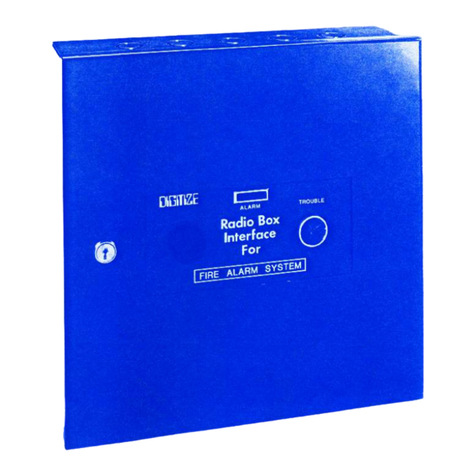
DIGITIZE
DIGITIZE RAD-800 instruction manual
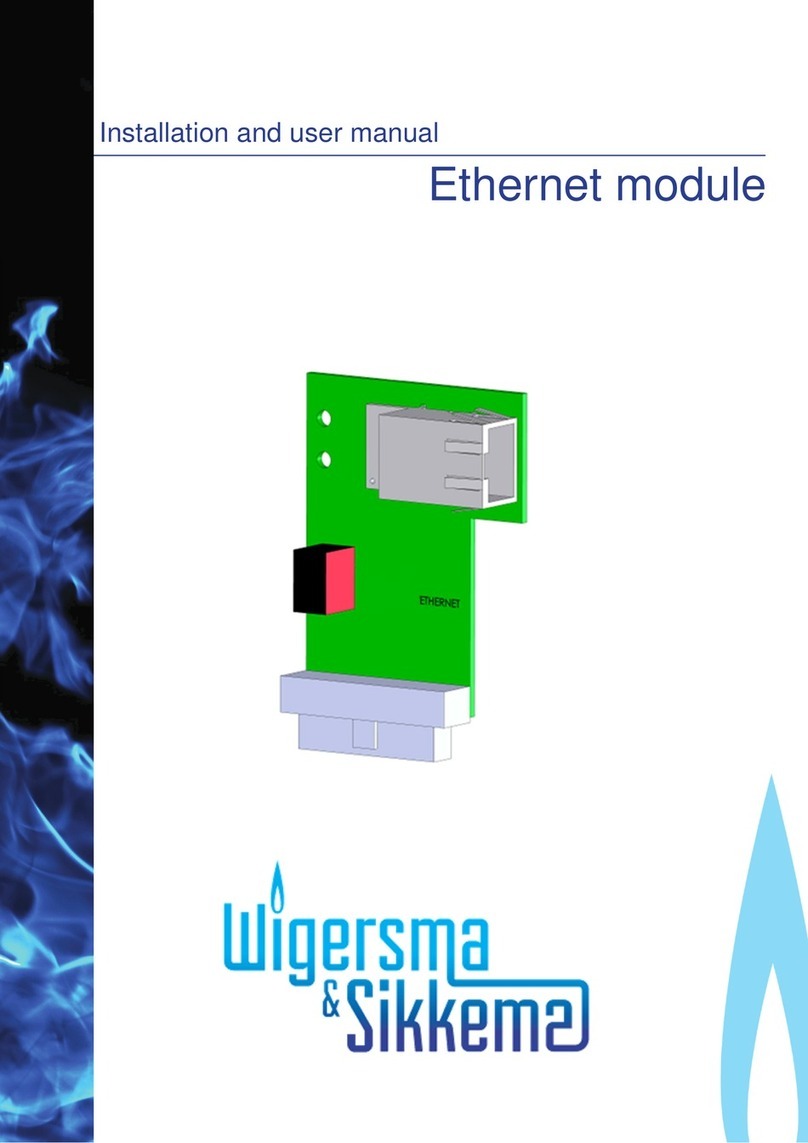
Wigersma & Sikkema
Wigersma & Sikkema Moxa MiiNePort E1 Installation and user manual
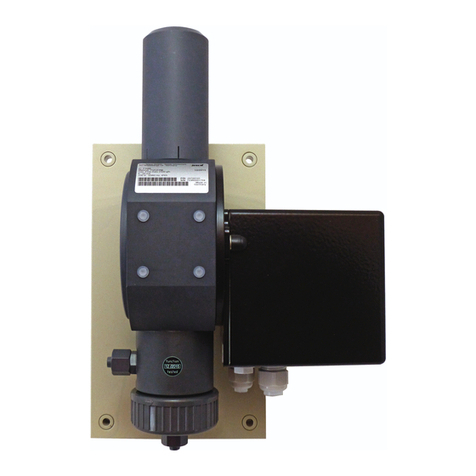
Lutz-Jesco
Lutz-Jesco C 7700 operating instructions
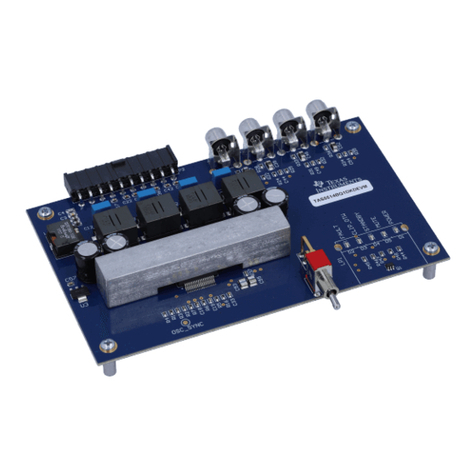
Texas Instruments
Texas Instruments TAS5514B user guide
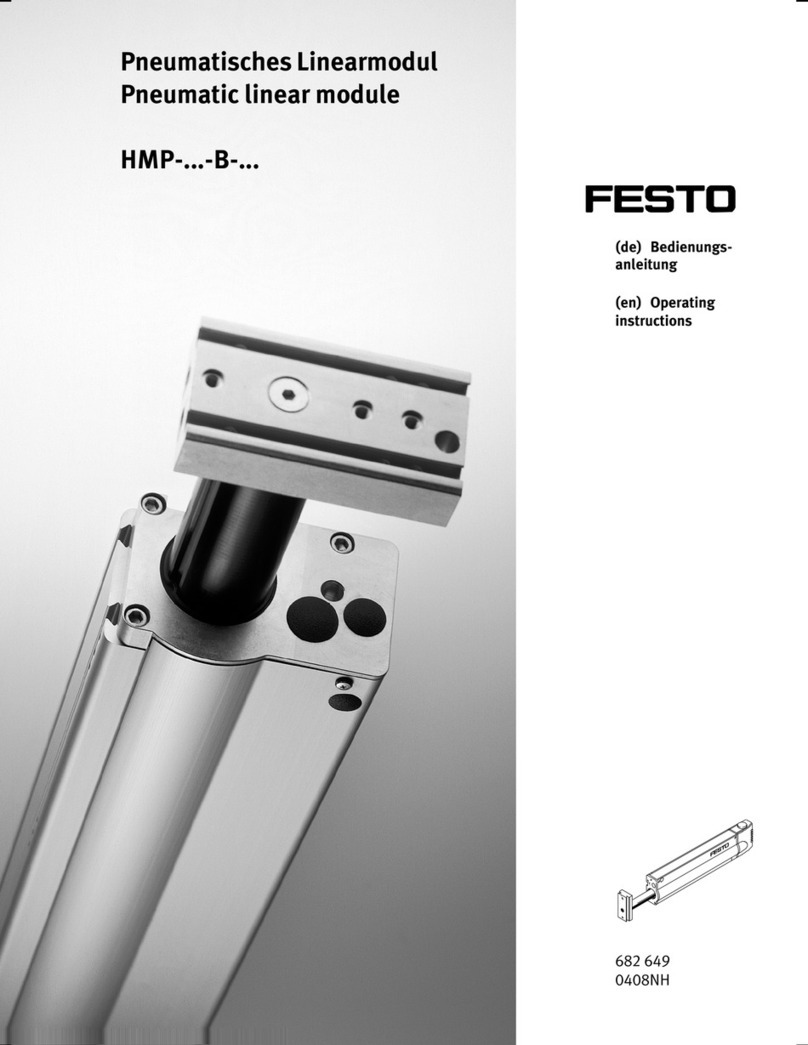
Festo
Festo HMP-x-B Series operating instructions
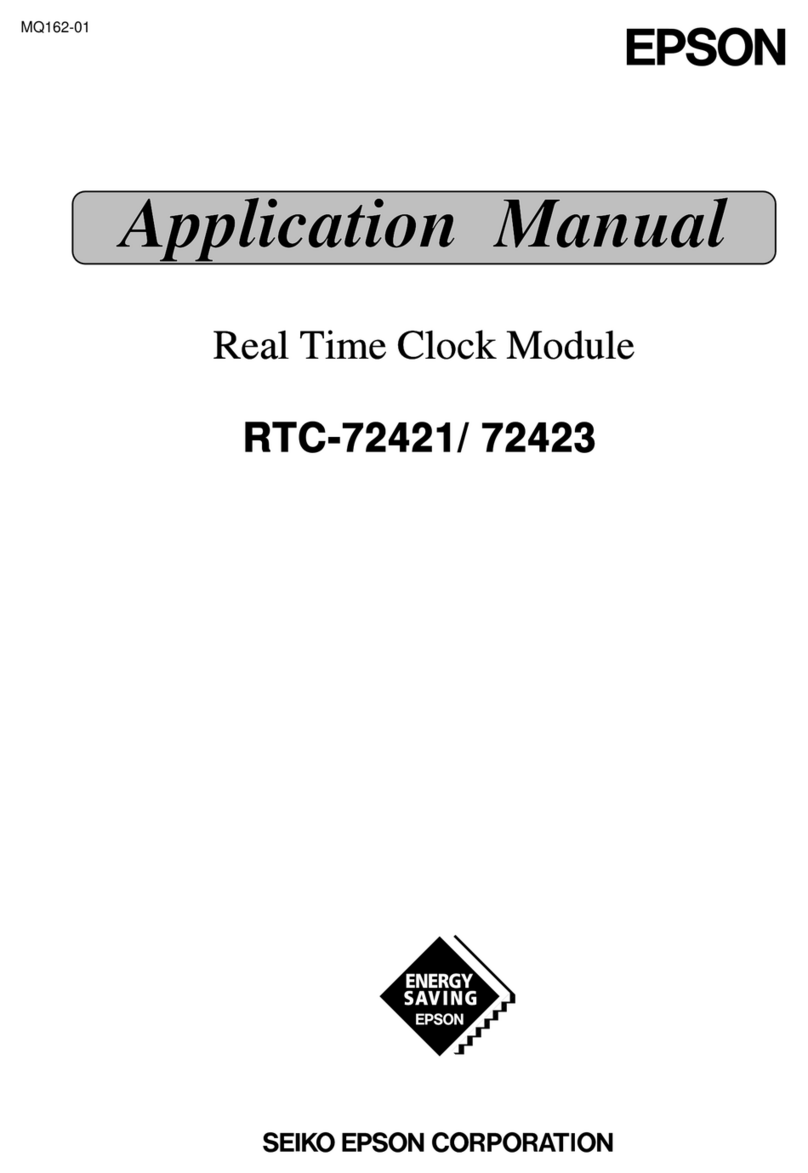
Epson
Epson RTC-72421 A Applications manual



